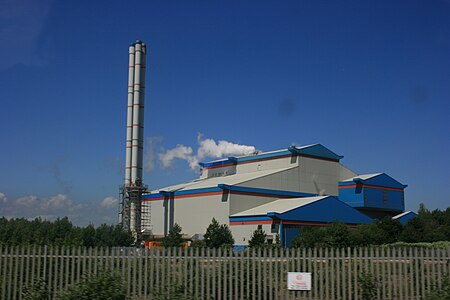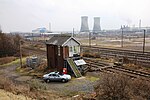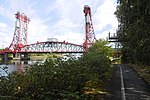Teesside EfW

Teesside Energy from Waste plant (also known as Teesside WTE power station or Haverton Hill incinerator) is a municipal waste incinerator and waste-to-energy power station, which provides 29.2 megawatts (MW) of electricity for the National Grid by burning 390,000 tonnes of household and commercial waste a year. It is located on the River Tees at Haverton Hill, east of Billingham in North East England. Developed and built by NEM, a subsidiary of Northumbrian Water, the initial plant replaced the Portrack Incinerator and opened in 1998. Subsequently, the facility became part of SITA, now Suez. The station is one of the most modern incinerators operating in England; it is noted for its innovative operation. In 2009, an extension was completed at the station, with the construction of an extra furnace line and a rail head. This increased the capacities of the plant from 19.2 MW and 250,000 tonnes of waste per year to its current levels. The plant initially received waste from Teesside and North Tyneside, but this was extended to include Northumberland with the 2009 extension. A second plant, the North East Energy Recovery Centre (NEERC), has been built on land adjacent to the first plant. This extends the site's catchment to include waste from south Tyne and Wear.
Excerpt from the Wikipedia article Teesside EfW (License: CC BY-SA 3.0, Authors, Images).Teesside EfW
Geographical coordinates (GPS) Address Nearby Places Show on map
Geographical coordinates (GPS)
| Latitude | Longitude |
|---|---|
| N 54.595833333333 ° | E -1.2583333333333 ° |
Address
TS23 1PY
England, United Kingdom
Open on Google Maps






